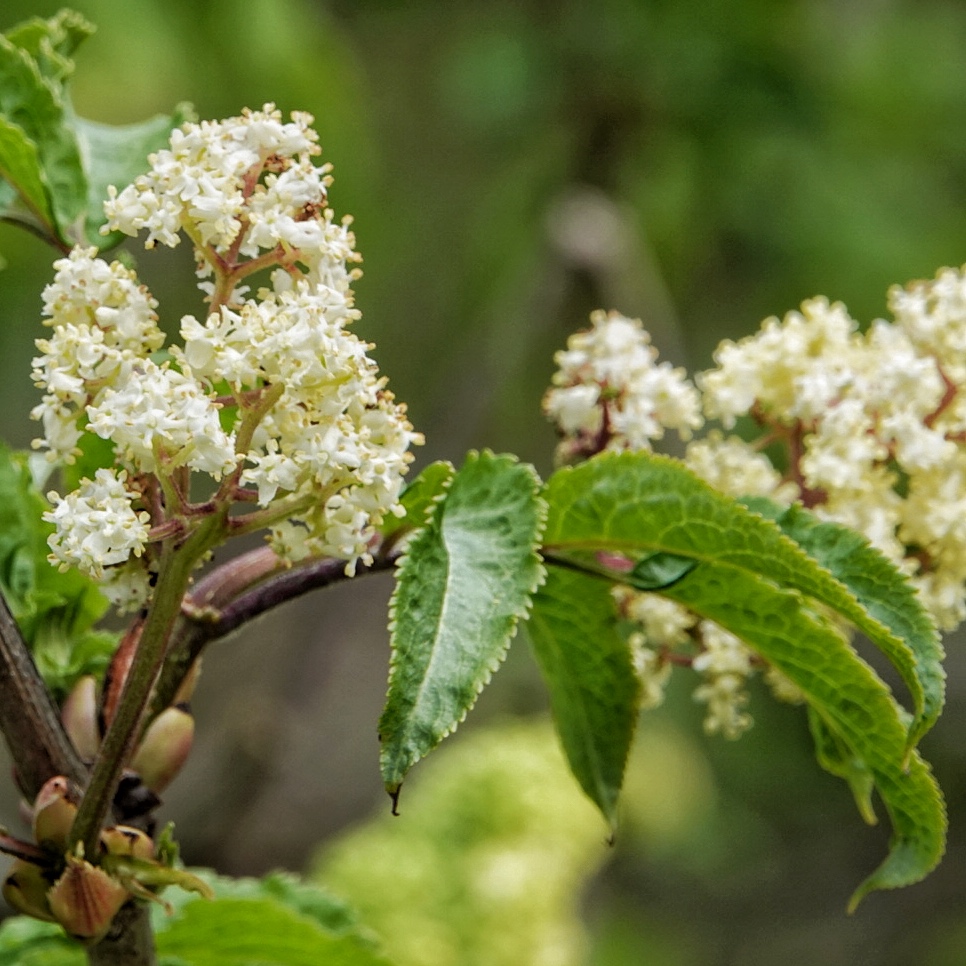
Early in spring, when Pacific Red Elderberry begins to bloom, it is identifiable from 100’ away. At that time of year there is simply nothing else that has that shade and shape of inflorescence. Later in the year I’ll need to see the long serrate leaves to be sure it’s not Red-osier Dogwood or Pacific Ninebark, or get a better perspective of the inflorescence to rule out Blue Elderberry, but in late March/early April, if I can see it I can identify it.
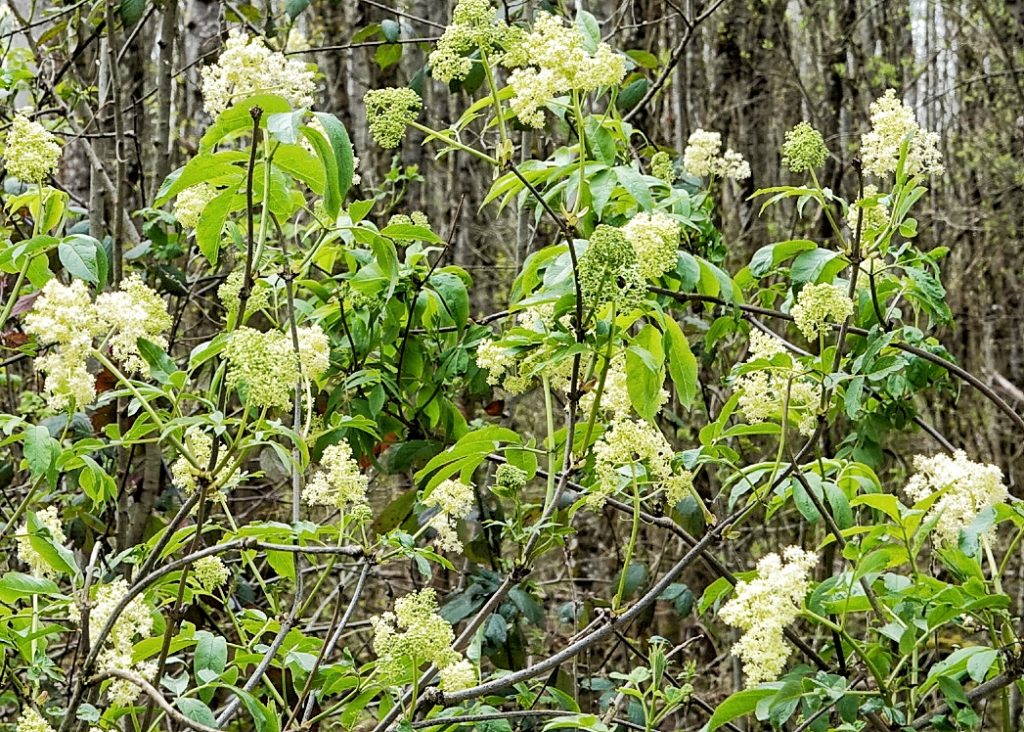
This plant doesn’t have quite the pantry-in-a-plant aspect of Salmonberry, because all parts of it are mildly toxic. But many animals do consume parts of it at certain times. It seems that either toxicity decreases, or palatability increases, when the berries are completely ripe, and most animals avoid them until then. And frost may decrease the toxicity of leaflets, stems, and bark, since deer and other browsers will consume them in winter but not summer, although that could just be a matter of availability.
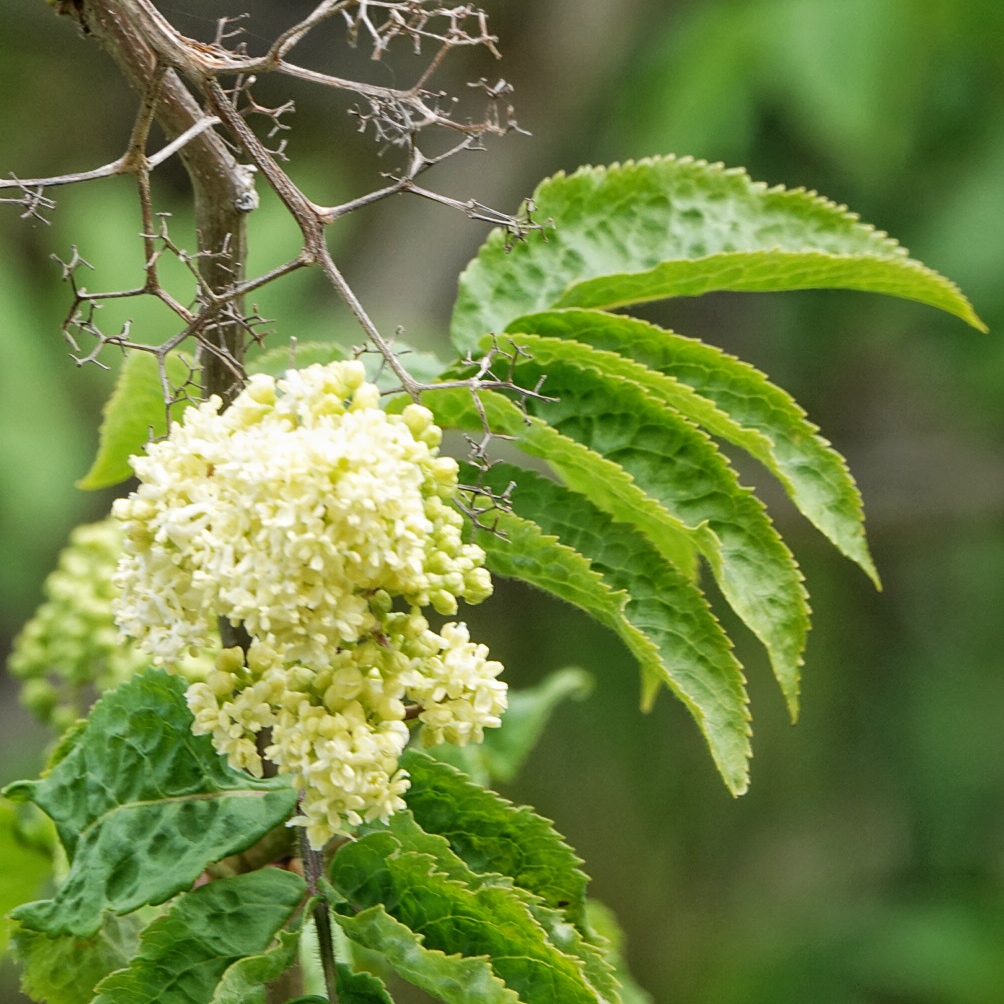
Indigenous peoples, among them the Gitxsan of w BC, ate the cooked berries as jam or mixed with eulachon (smelt) oil. They were often mixed with other berries into berry cakes, which were a feast food. Caution would be advised about eating these berries raw, because they do contain cyanogenic glycoside and other mildly toxic alkaloids, although it seems these are mostly contained in the seeds, and are destroyed by cooking. The roots, leaves, and bark contain these same toxins, but they were sometimes boiled to make a tea which was used as an emetic and purgative, and the leaves were used to treat boils.
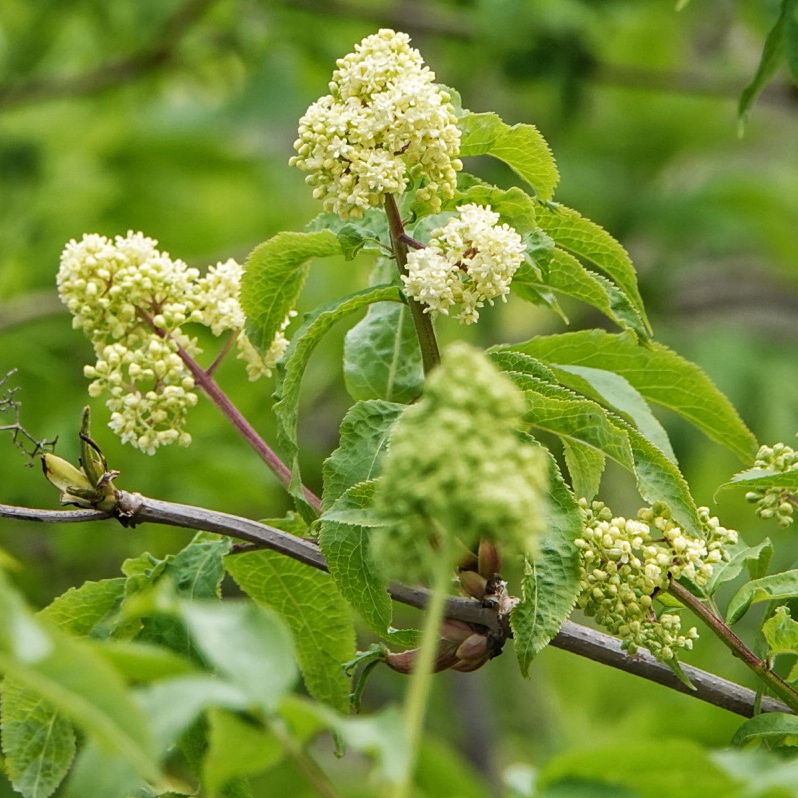
Modern herbalists have many uses for various parts of the plant, including treating sinus problems and high blood pressure. And elderberry extract has been used to combat cancer, because it seems to have properties that inhibit the growth of tumors. But again, naive experimentation is not recommended, and treatment should only be attempted by one who has extensive knowledge of the preparations involved.
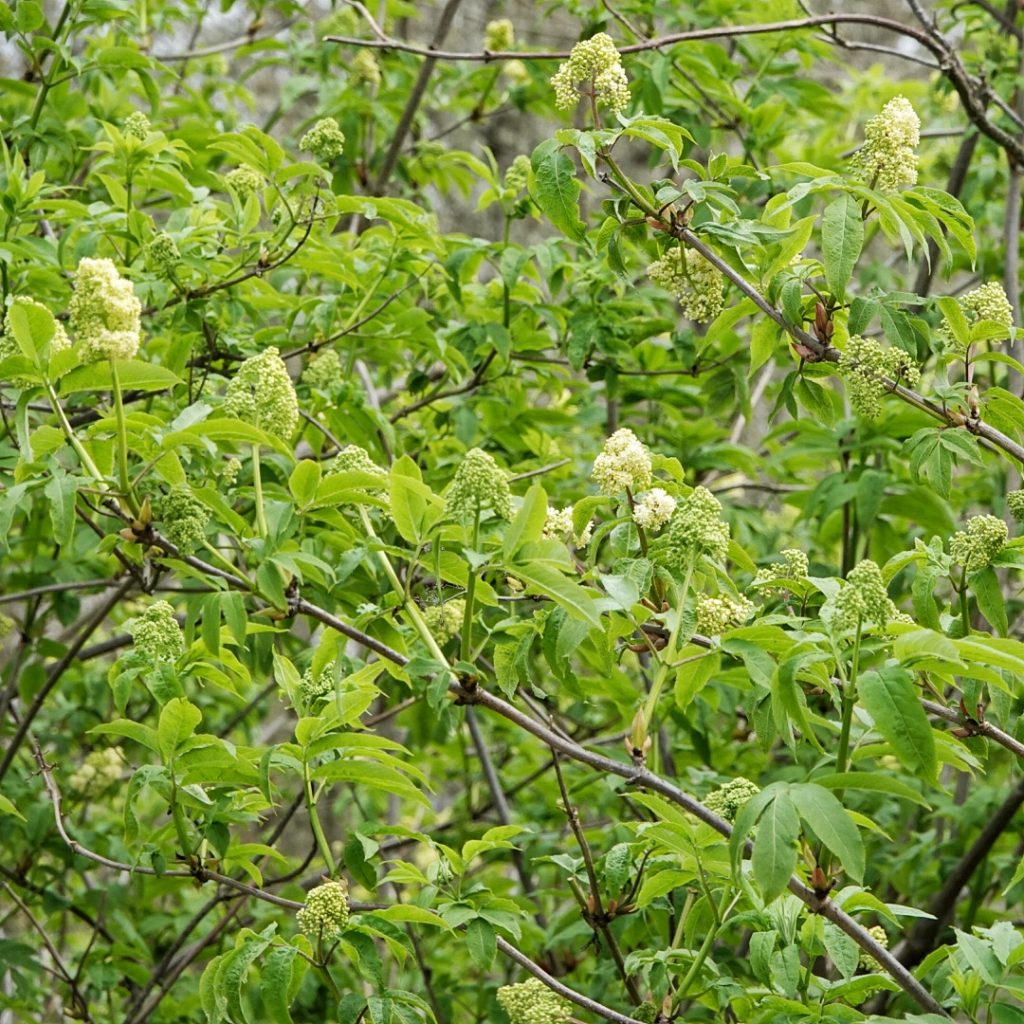
This is a handsome plant, with ecological usefulness that goes beyond its consumability and includes soil stabilization and providing cover for wildlife. And its nicely textured leaves and inflorescence should be left where they are found. There are sound biological reasons for doing so, but there are also aesthetic ones. Once, in the callowness of youth, I brought home a flowering branch of Pacific Red Elderberry, and put it in a vase. Within two hours my apartment smelled like a litter box. It took me another hour to trace the smell, and an evening with the windows open to get rid of it.
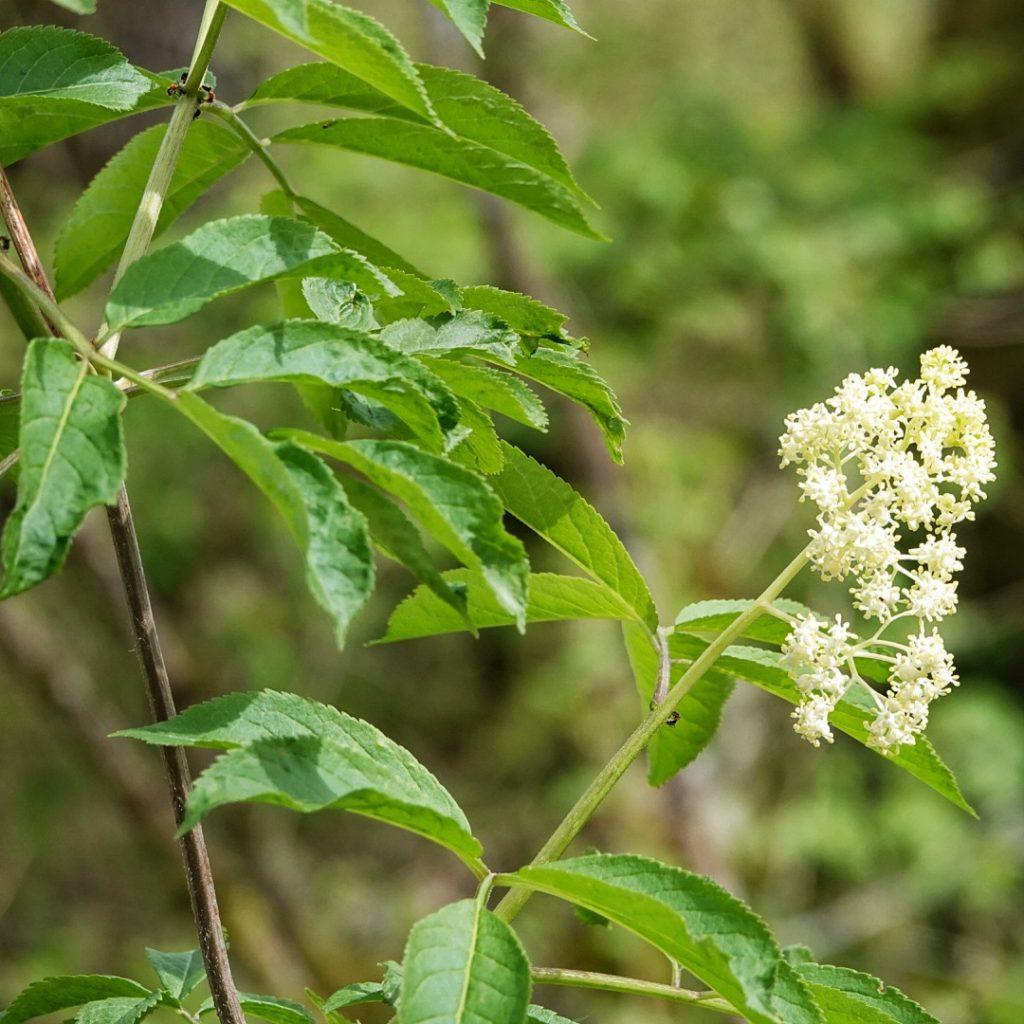
Description– This is a small tree which may become a large shrub (up to 15’ tall) in the right conditions, with many reddish brown stems arising from a central location; leaves are opposite, and have 5-7 leaflets; leaflets are lanceolate to ovate, up to 6” long, serrated, with pointed tips, and are hairy along the veins on their undersides; flowers are small, white to cream colored, with petals reflexed to expose horizontal stamens; inflorescence tall, broad, globular to oval cyme; berries small (<5mm), red, smooth.
Similar species– S. cerulea has flat-topped inflorescence and blue berries.
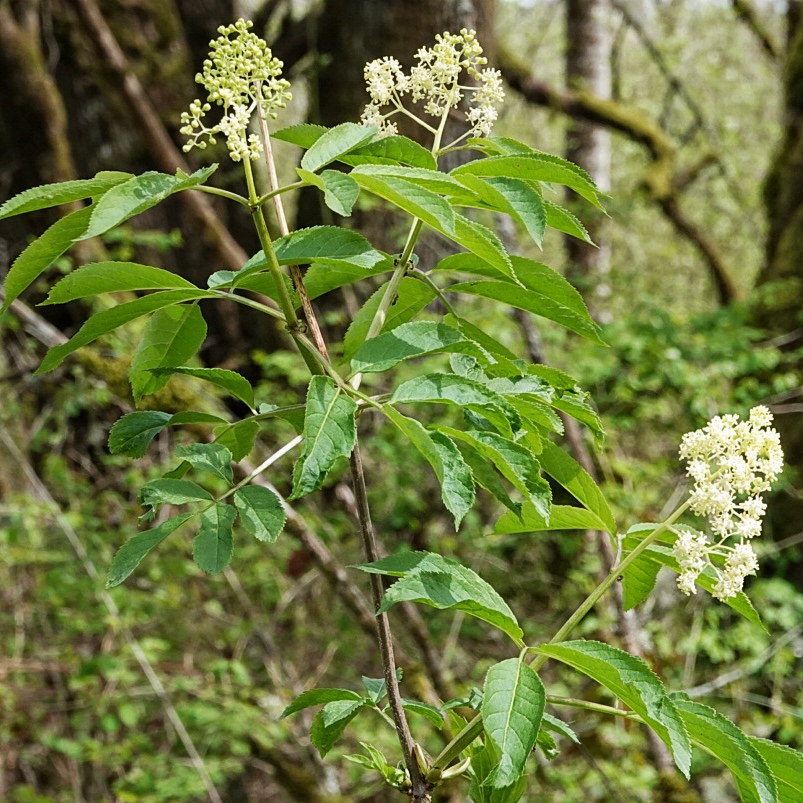
Habitat– Moist to mesic, open to somewhat shaded areas, as well as meadows, wetlands, riparian corridors, and roadways.
Range– Northern Hemisphere temperate zone; primarily west of the Cascades in our region, as well as nw California; other varieties/subspecies grow at higher elevations and/or in montane forests east of the Cascades.
Reproductive timing-Flowers bloom from March to June, depending on elevation; berries ripen early to mid summer.
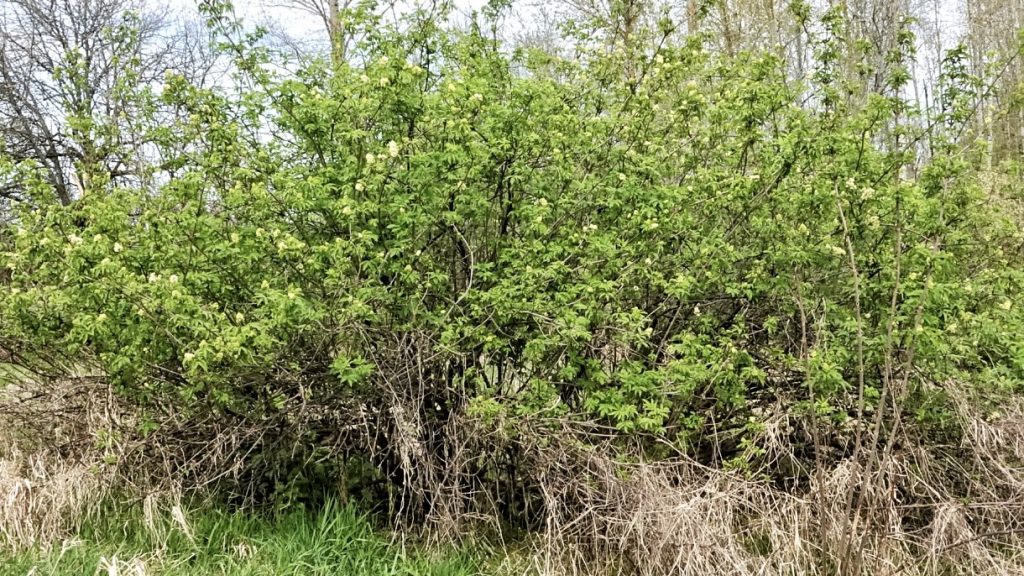
Eaten by-This plant is utilized as a larval host by the moths Drasteria ochracea, Zotheca tranquilla, Anania tertialis, and Sabulodes aegrotata, and the butterfly Celastrina echo (Echo Azure). The Lepturine longhorn beetles Desmocerus cribripennis and D. lacustris also use this plant exclusively for a larval host (thanks for the heads up, Sharon Collman!). Band-tailed Pigeons, Robins, and Cedar Waxwings, along with several other birds, are fond of its berries, and deer, elk, raccoons, bears, squirrels, and mice consume them as well.
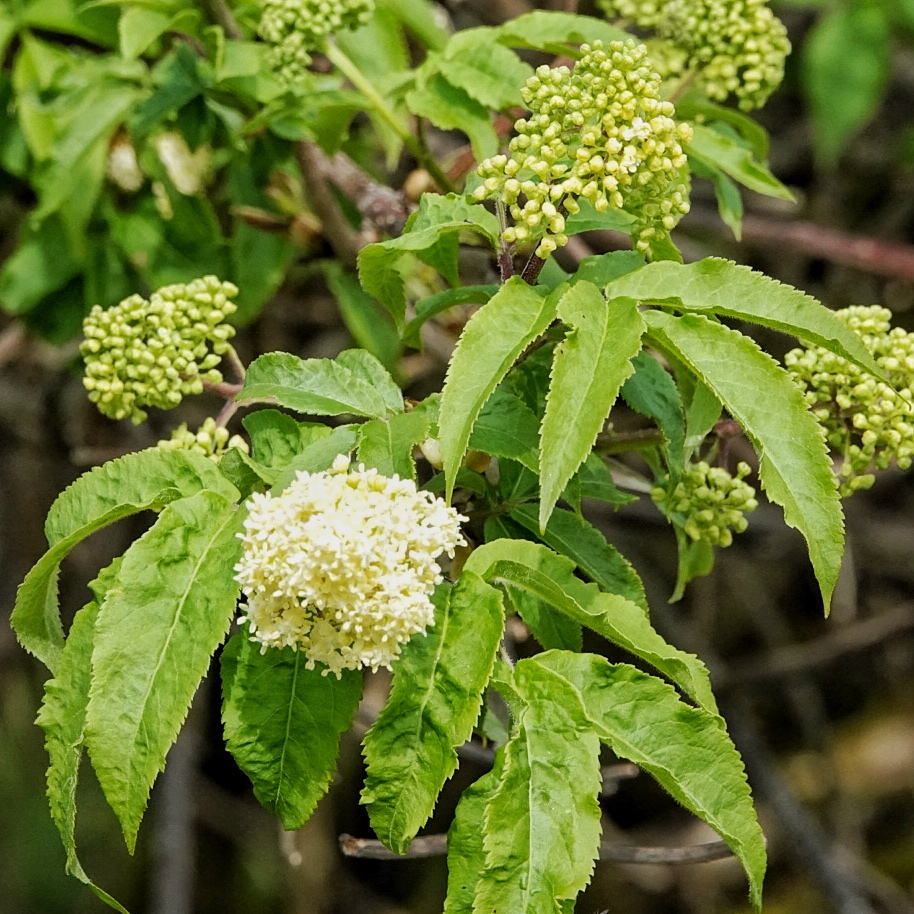
Etymology of names– Sambucus is from Greek, and refers to an ancient Asian stringed, harp like instrument, the Sambuca, which was made from the branches of elderberry shrubs. The specific epithet racemosa is from Latin and refers to the elongated flower clusters, or racemes. It seems that the ‘elder’ part of the common name refers not to an aged human, but instead comes from an Anglo Saxon word for fire, because the hollow stems were used to direct air into the middle of a fire.
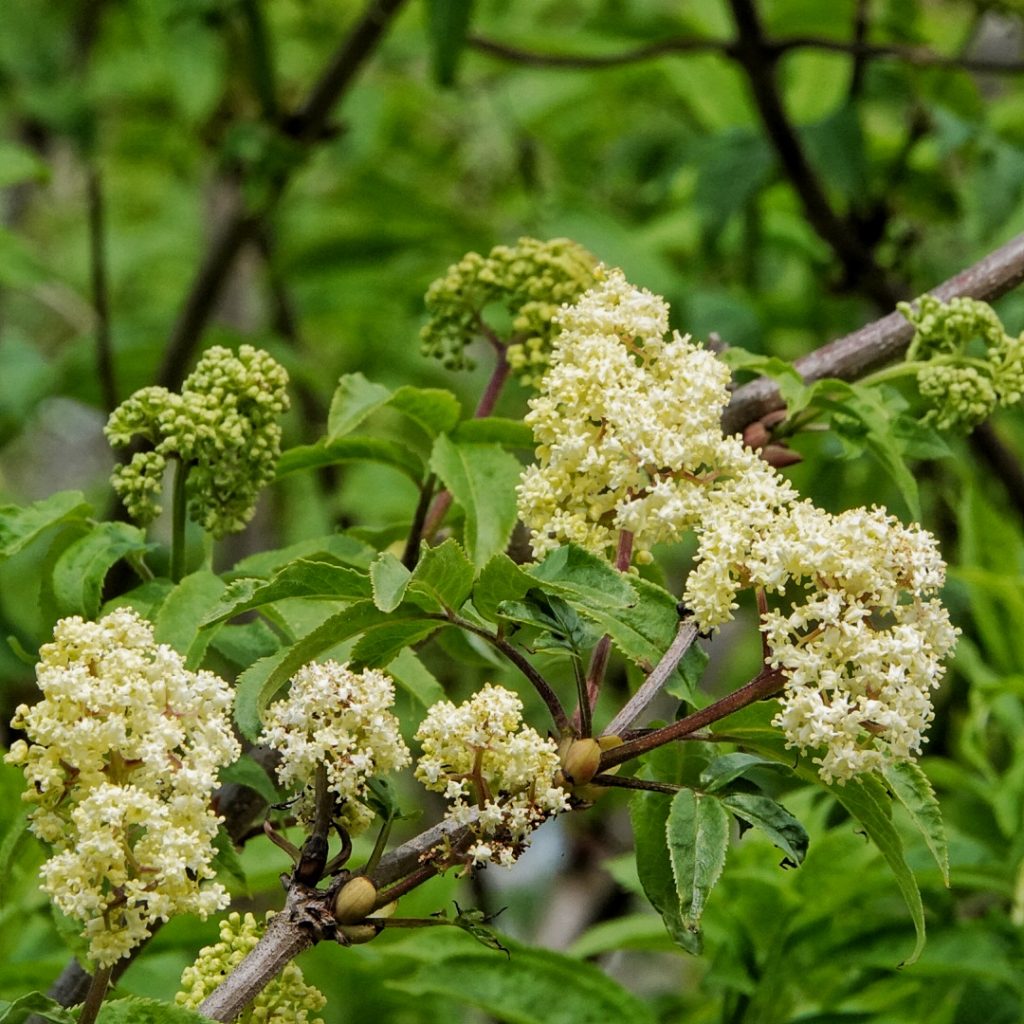
Sambucus racemosa | Red Elderberry | Wildflowers of the Pacific Northwest
https://www.wnps.org/native-plant-directory/8-sambucus-racemosa
https://calscape.org/Sambucus-racemosa-(Red-Elderberry)
https://pfaf.org/user/Plant.aspx?LatinName=Sambucus+racemosa
https://plants.usda.gov/factsheet/pdf/fs_sara2.pdf
https://www.wildflower.org/plants/result.php?id_plant=sara2
https://www.fs.fed.us/database/feis/plants/shrub/samrac/all.html
https://www.britannica.com/science/cyme
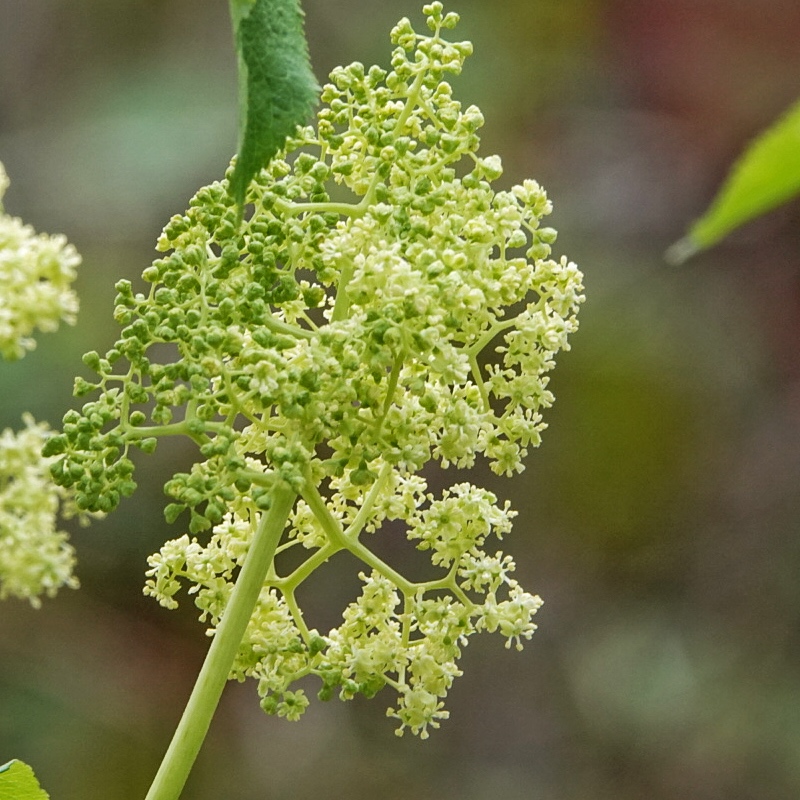
As we in Arizona right now, the contrast with the PNW is stark – always has amazed me how the PNW provides a different kind of berry every few weeks for the birds to eat! Down here, although they obviously are thriving, the only berry I know of that the birds eat
is produced by the parasitic mistletoe.
Thanks for that, Alison. It’s nice to picture other areas during the same time frame.